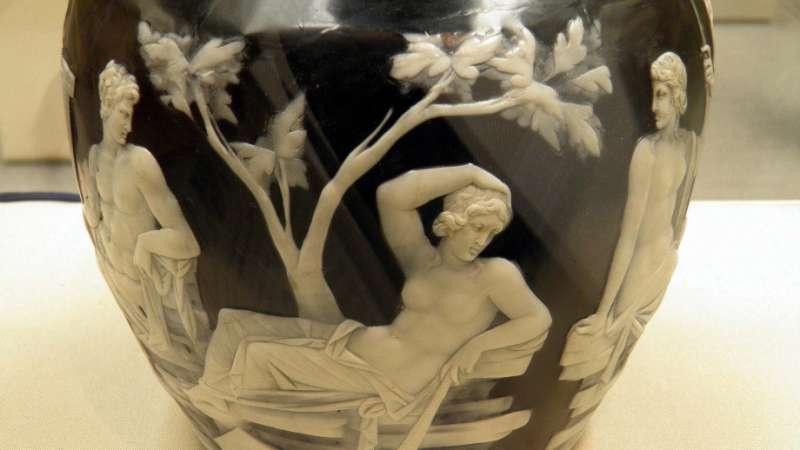New challenge to centuries-old theories on Roman glass

New research from The Australian National University (ANU) is challenging centuries-old theories on how ancient Roman cameo glass was made and suggests the British Museum's most famous Roman glasswork is wrongly classified.
Associate Professor Richard Whiteley from the ANU School of Art and Design will present his new evidence at a historical glassworks conference at the British Museum next week.
Associate Professor Whiteley believes archaeologists, historians and museum curators have for hundreds of years incorrectly classified Roman cameo glass from the period of around 30BC-50AD as blown glass - including the British Museum's most famous example; the Portland Vase.
"There was a critical moment for me when I felt strongly that historians and archaeologists have been wrong for hundreds of years," Professor Whiteley said.
Professor Whiteley, who is known internationally for his glass artworks, said his research over the past decade indicated the Roman cameo glass was not blown glass, but was made by a cold-pressing process now known as pate de verre.
His research was based in part by examining a fragment of Roman cameo glass from the ANU Classics Department under a Computed Tomography scanner at the ANU Research School of Physics and Engineering.
The images for the first time revealed the shape, direction and composition of air bubbles trapped between a blue and white layer of Roman glass.
"I remember the moment I saw it, I said: Oh my god, this is extraordinary, because I also saw cold working marks in the surface which were inconsistent with the assumption that it was blown," Professor Whiteley said.
"I carve and shape glass with my hands, and have done for decades. The marks I saw were inconsistent with what I see in my work.
"We saw a bubble configuration within the glass that results from a pressing and turning motion. I believe that cold granulated glass has been packed into a mould and then a blob of molten blue glass introduced and pressed against mould heating the white granules from behind.
"You just would not get a bubble that size and flat-shaped from blowing. The most striking thing about it, is not its size and its flatness, but we found a section where the blue glass has mixed with the granulated white specks of glass."
Professor Whiteley acknowledges a German artist, Rosemarie Lierke, came to a similar conclusion in the 1990s, but her writings have not been accepted because of the lack of evidence.
Professor Whiteley hopes his new theory will gain acceptance and funding for an international research team to recreate the Portland Vase using the original pate de verre method.
"It's not about proving people wrong, it's about correcting the historical record and reviving and restoring a technique lost for over 2,000 years."
Professor Whiteley's findings have only been made possible through collaboration with Dr Elizabeth Minchin at the ANU Classics Department, who allowed testing on a fragment of Roman Cameo glass, and the Research school of Physics and Engineering where the scanning technology allowed Professor Tim Senden to express the bubble formations with mathematical formulae.
Provided by Australian National University




















